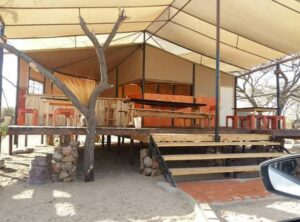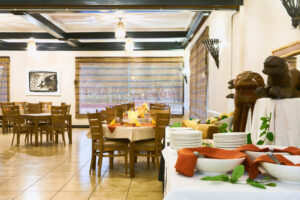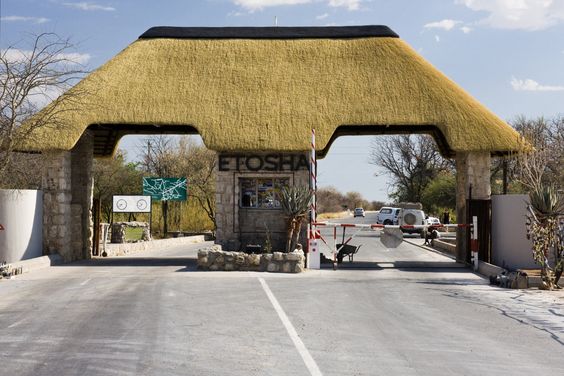Tour Details:
This 10-day in Namibia, starts and ends in Windhoek in Namibia. This is to visit around the main highlights that Namibia has to offer in Africa. In just 10 days and 9 nights we would never be able to fit in everything you wanted to see but you will see the main most attractions. You will spend time amongst the ancient dunes in Sossusvlei, go back in time with the coastal time of Swakopmund. Experience the vast landscapes of Otjiwarongo and exceptional game viewing at the world-famous Etosha National Park.












 After breakfast, grab your camera and take advantage of the morning to travel. This beautiful area is a hikers’ and rock climbers’ paradise and the view from the top of the peaks is an incredible reward for the effort to get there. For history buffs, organized guided walks are available where a guide will take you to view some of the numerous rock art sites, explaining the stories captured in the ancient drawings.
After breakfast, grab your camera and take advantage of the morning to travel. This beautiful area is a hikers’ and rock climbers’ paradise and the view from the top of the peaks is an incredible reward for the effort to get there. For history buffs, organized guided walks are available where a guide will take you to view some of the numerous rock art sites, explaining the stories captured in the ancient drawings. Guest will have breakfast and take off to Damaraland by which the major attractions that are sacred in Spitzkoppe, the Brandberg, Twyfelfontein, Vingerklip and the otherworldly Petrified Forest. Visitors can take in the dramatic vistas, catch a glimpse of the rare desert-adapted elephant, and enjoy spectacular stargazing in crystal-clear night skies from one of the many safari camps dotting Damaraland.
Guest will have breakfast and take off to Damaraland by which the major attractions that are sacred in Spitzkoppe, the Brandberg, Twyfelfontein, Vingerklip and the otherworldly Petrified Forest. Visitors can take in the dramatic vistas, catch a glimpse of the rare desert-adapted elephant, and enjoy spectacular stargazing in crystal-clear night skies from one of the many safari camps dotting Damaraland.  Clients are pick up in the Morning at 09:00 am and depart to Etosha and on arrival clients will get lunch and after Lunch, if time permits, enter Etosha for an afternoon game drive. Depending on how often you stop today, on entering the park, the first stop would be Okaukuejo where you pay your entry fee and I suggest you pop in at the local shop to purchase some drinks and snacks and most importantly, a map of Etosha which will show you all the waterholes along the way. Etosha has lions, giraffes, rhinos, zebras, springbok and elephants. This on top of many lesser and common plains herds, and abundant birds makes game viewing in Etosha.
Clients are pick up in the Morning at 09:00 am and depart to Etosha and on arrival clients will get lunch and after Lunch, if time permits, enter Etosha for an afternoon game drive. Depending on how often you stop today, on entering the park, the first stop would be Okaukuejo where you pay your entry fee and I suggest you pop in at the local shop to purchase some drinks and snacks and most importantly, a map of Etosha which will show you all the waterholes along the way. Etosha has lions, giraffes, rhinos, zebras, springbok and elephants. This on top of many lesser and common plains herds, and abundant birds makes game viewing in Etosha. Clients will take early breakfast and then go on the Full day game drive and around 12h00 -13h00 clients will have lunch inside the park and continue with the game drive up till the afternoon and after the game drive guest will have leisure time to enjoy the atmosphere before dinner.
Clients will take early breakfast and then go on the Full day game drive and around 12h00 -13h00 clients will have lunch inside the park and continue with the game drive up till the afternoon and after the game drive guest will have leisure time to enjoy the atmosphere before dinner. Clients will grab early breakfast and depart to Waterberg in north central Namibia and named for the springs that emanate from its foothills, the Waterberg Plateau National Park is a fascinating geological site featuring compressed sandstone crags, 200 million-year-old dinosaur footprints, and petrified sand dunes. The area’s natural water sources make it far more fertile than its environs, and the park is blessed with a plethora of plant and animal species, including leopards, rhinoceros, vultures, cheetahs, bush babies, ferns and fig trees.
Clients will grab early breakfast and depart to Waterberg in north central Namibia and named for the springs that emanate from its foothills, the Waterberg Plateau National Park is a fascinating geological site featuring compressed sandstone crags, 200 million-year-old dinosaur footprints, and petrified sand dunes. The area’s natural water sources make it far more fertile than its environs, and the park is blessed with a plethora of plant and animal species, including leopards, rhinoceros, vultures, cheetahs, bush babies, ferns and fig trees.


